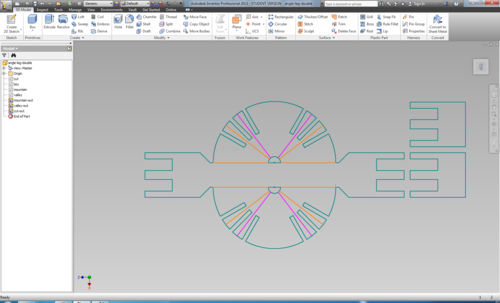

These are called “packages.” (Most apps found in /Applications/ are actually packages called “bundles”). MacOS (and Unix) has a special kind of folder that masquerades as a file. You may want to drag this folder to your Favorites area of the Finder sidebar for easy access later. Now your Library should show up in the view.

When it finds such “file” (which are actually packages), Rhino for Mac attempts to load the assembly with the same name contained within this package. ~/Library/Application Support/McNeel/Rhinoceros/MacPlugIns/įolder scanning the sub-folders looking for. When Rhino for Mac launches, it searches the contents of the
Rhino for mac 5.3.2 parameters zip#
zip archives that need to be decompressed and copied into the user’s Library folder at the appropriate location, specifically the ~/Library/Application Support/McNeel/Rhinoceros/MacPlugIns/ folder 2. This extension denotes a “Rhino for Mac plugin installer.” Rhino for Mac knows that such files are actually. macrhi extension is a file extension associated with the Rhino for Mac application (both Rhinoceros.app and RhinoWIP.app).
Rhino for mac 5.3.2 parameters install#
macrhi archive to launch and install the plugin…

If Rhino for Mac is not currently open, double-click the.macrhi archive onto Rhino for Mac’s icon in the dock OR: Notice that the icon changes from a zip archive to a Rhino RHI:.You will be prompted to confirm this change.

Single-click the name of the new archive you created in step 5.rhp folder you created in the previous step and select “ Compress (your plugin name).” This creates a zip archive of the contents of the folder. The icon of the folder 1 should now look like this….For example, if your plugin is called HelloRhinoCommon, rename the folder that contains this file HelloRhinoCommon.rhp… The new name should be your plugin assembly with a. Single-click the name your plugin’s Release (or Debug) folder to Rename it.Let’s imagine our plugin is called HelloRhinoCommon and we have built it for Release… You will, in any case, need to Quit an Restart Rhino for the plugin to activate. macrhi onto the dock icon of a running instance of Rhino and it will install the plugin as well. Once this is done, you can double-click the archive and Rhino will launch and install the plugin. rhp), compress the folder, and change the extension from. You simply rename your plugin’s containing folder with an special extension (. However, installing plugins is very easy. Rhino for Mac does not (yet) have a Plugin Manager. If you are not there yet, see Your First Plugin (Mac). It is presumed you have a plugin that successfully builds and runs already. macrhi format is no longer in active development.


 0 kommentar(er)
0 kommentar(er)
